If you live in Colorado, particularly in the mountains, then you’ve certainly run across a few lizards in your daily hikes on the trails or even in your own backyard. Have you ever wondered about the lizards you see?
What species are they? Are they poisonous? While there are two poisonous lizards in North America, the Gila monster and the Mexican beaded lizard, you’re not going to find either of them in Colorado. There are, however, 11 lizard species you can find in Colorado. Read on below to find out a little about each of them.

The 11 Lizard Species Found in Colorado
1. Lesser Earless Lizard (Small)
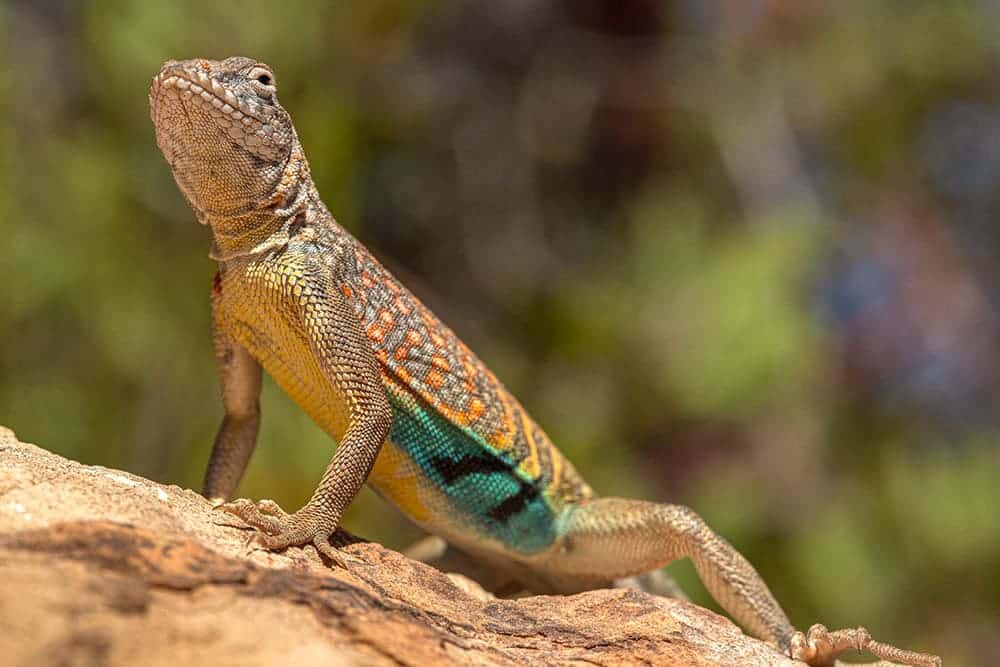
| Species: | Holbrookia maculata |
| Longevity: | 4 to 5 years |
| Good to own as a pet?: | No |
| Legal to own?: | Yes |
| Adult size: | 2.5 inches |
| Diet: | Carnivorous |
The lesser earless lizard is a small lizard with a stout body. This lizard can be easily identified from other lizards in Colorado because it has no ear openings, as its name suggests. These lizards can be found in most open habitats in the Colorado Plateau. While they prefer to live in open plains, they can be found in the woodlands and dry regions of the area as well.
This species is carnivorous and likes to dine on spiders, butterflies, moths, grasshoppers, beetles, and insects. The natural predators of the lesser earless lizard include felines of any kind, dogs, snakes, and other larger lizards.
2. Common Collared Lizard (Large)
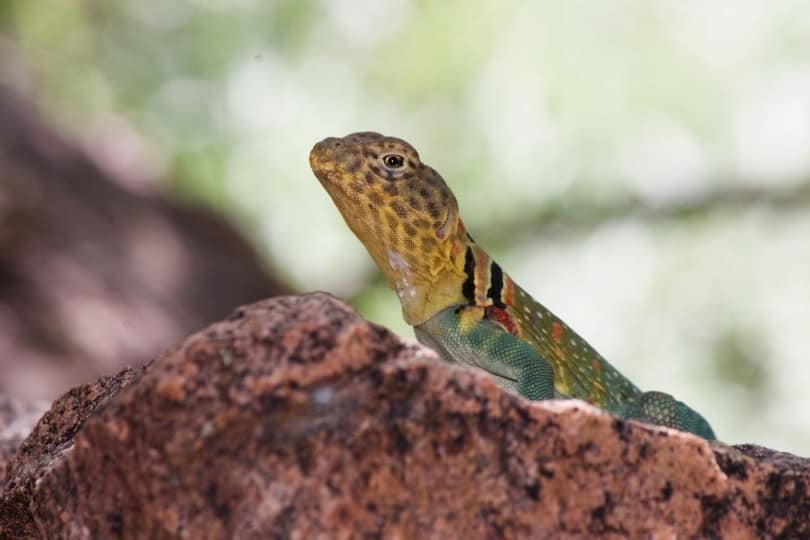
| Species: | Crotaphytus collaris |
| Longevity: | 5 to 8 years |
| Good to own as a pet?: | Yes |
| Legal to own?: | Yes |
| Adult size: | 15 inches |
| Diet: | Omnivorous |
The common collared lizard can be found in open, dry regions of Colorado. Often referred to as the eastern collared lizard, it has powerful jaws and a large head. The name comes from the black bands around the lizard’s neck that make it look like it’s wearing a collar.
This species is said to be one of the best to keep as pets, especially for beginners. Though the species is said to be omnivorous, they will eat crickets, mealworms, Dubia cockroaches, and other various insects. Natural predators include large birds, larger lizards, coyotes, house cats, and other carnivorous mammals.
3. Greater Short-Horned Lizard (Large)
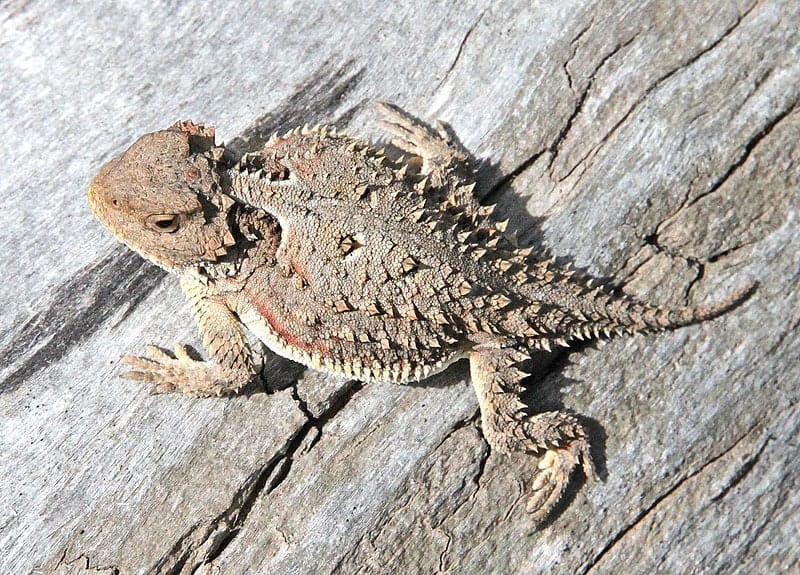
| Species: | Phrynosoma hernandesi |
| Longevity: | 5 to 8 years |
| Good to own as a pet?: | No |
| Legal to own?: | Yes |
| Adult size: | 5 inches |
| Diet: | Insectivore |
The greater short-horned lizard grows to around 5 inches in size and does not make a good pet. This species features a flat, squat body with short spines on its heads. They are easy to identify because of their short legs and snub noses. The females are larger than the males.
They live in semi-arid plains and are insectivores. This means they prefer to dine on ants and small beetles. The natural predators for this species include coyotes, dogs, and wolves.
4. Long-Nosed Leopard Lizard (Large)

| Species: | Gambelia wislizenii |
| Longevity: | 7 years |
| Good to own as a pet?: | Yes |
| Legal to own?: | Yes |
| Adult size: | 5.75 inches |
| Diet: | Carnivorous |
The long-nosed leopard lizard reaches around 5.75 inches and makes a good pet. Their tails are round and long, and they have large heads. These lizards are carnivores, which means they like to snack on insects, scorpions, silkworms, young mice, anoles, and more.
You can find this species in dry areas with gravel, sand, or rocks. They like to live in areas with a lot of plants. Natural predators of this species include coyotes, birds, snakes, and badgers.
5. Sagebrush Lizard (Small)

| Species: | Sceloporus graciosus |
| Longevity: | 2 years |
| Good to own as a pet?: | Yes |
| Legal to own?: | Yes |
| Adult size: | 3.5 inches |
| Diet: | Carnivorous |
The sagebrush lizard is a common lizard in Colorado and has made a good pet for many children. They are a small lizard that grows to around 3.5 inches as an adult. They usually live near a sagebrush plant in the wild, which is where they got their name from.
These lizards are carnivores and will eat insects, spiders, and crickets, and mealworms, to name a few. The natural predators of this species include birds, snakes, and cats. You can often find this species basking on logs or rocky outcroppings.
6. Eastern Fence Lizard (Medium)
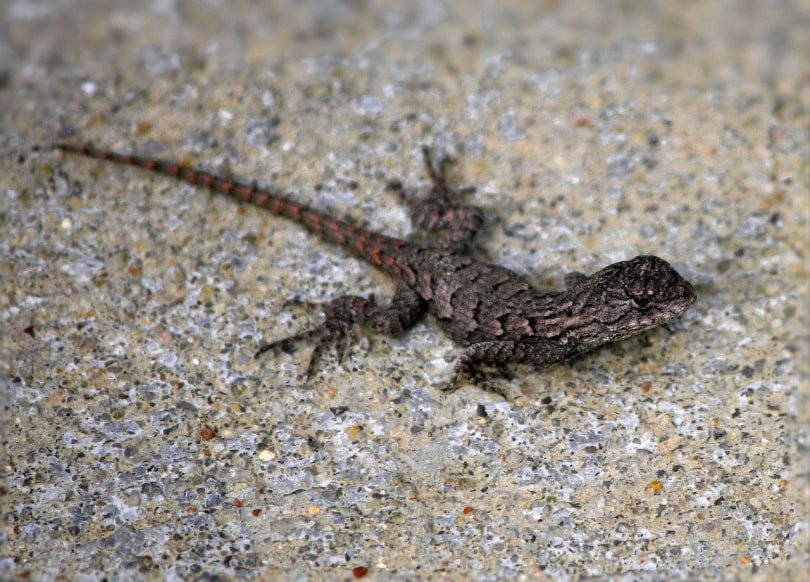
| Species: | Sceloporus undulatus |
| Longevity: | 2 to 5 years |
| Good to own as a pet?: | Yes |
| Legal to own?: | Yes |
| Adult size: | 7.5 inches |
| Diet: | Carnivorous |
The eastern fence lizard can be found in the edge of forests, in rotting logs, and in rock piles. Sometimes called prairie lizards, they reach around 7.5 inches in adulthood and are good to keep as pets.
These lizards are carnivores and will eat spiders, ants, beetles, ladybugs, stink bugs, and grasshoppers, among other creatures. The natural predators of this species include red imported fire ants, larger lizards, and some domestic animals.
7. Common Side-Blotched Lizard (Small)
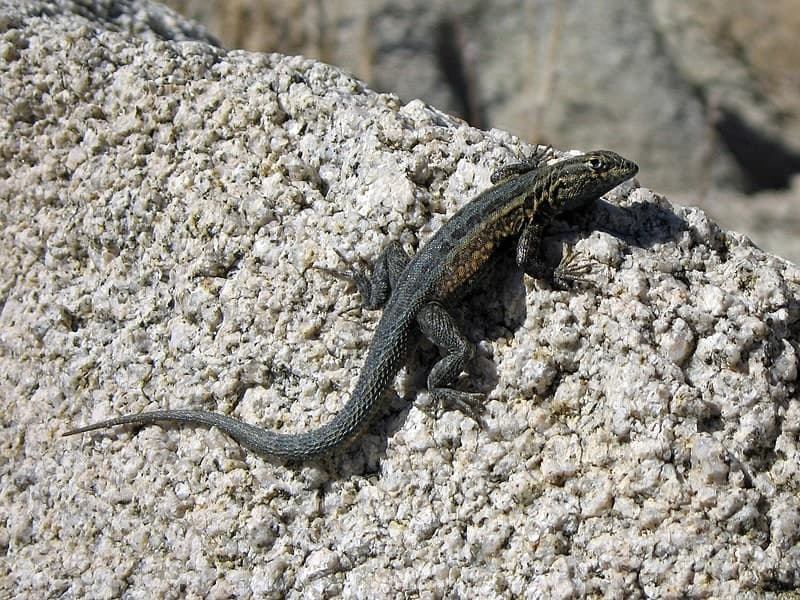
| Species: | Uta stansburiana |
| Longevity: | 2 years |
| Good to own as a pet?: | No |
| Legal to own?: | Yes |
| Adult size: | 2.4 inches |
| Diet: | Carnivorous |
The common side-blotched lizard is a small lizard that reaches 2.4 inches in adulthood. This lizard is known for not living very long, and they don’t make good pets.
You will find them mostly in semi-arid regions. This species will eat almost any type of bug. The natural predators of this species include snakes, birds, and larger lizards.
8. Colorado Checkered Whiptail (Small)

| Species: | Aspidoscelis neotesselatus |
| Longevity: | 3 years |
| Good to own as a pet?: | No |
| Legal to own?: | Yes |
| Adult size: | 4 inches |
| Diet: | Carnivorous |
The Colorado checkered whiptail is a small lizard that comes from a population of triploids. This means that the species is made up of females that are asexual, and their eggs develop without having to be fertilized.
You can find this species in open areas, rocky canyons, woodlands, and shrubs. They are carnivores, so they eat any type of bug. The natural predators for this species include hawks, collared lizards, coyotes, and all snakes that are big enough to swallow them.
9. Six-Lined Racerunner (Medium)

| Species: | Aspidoscelis sexlineatus |
| Longevity: | 6 years |
| Good to own as a pet?: | No |
| Legal to own?: | Yes |
| Adult size: | 9 inches |
| Diet: | Insectivore |
The six-lined racerunner is a lizard that reaches 9 inches long in adulthood and can be found everywhere from woodlands to grasslands and from rocky outcroppings to floodplains.
These lizards are extremely fast and can run up to 18 mph, so they don’t make very good pets. They are insectivores so eat a whole lot of bugs, including spiders and beetles. Natural predators would have to be fast enough to catch them, so their problems are usually environmentally related.
10. Great Plains Skink (Large)
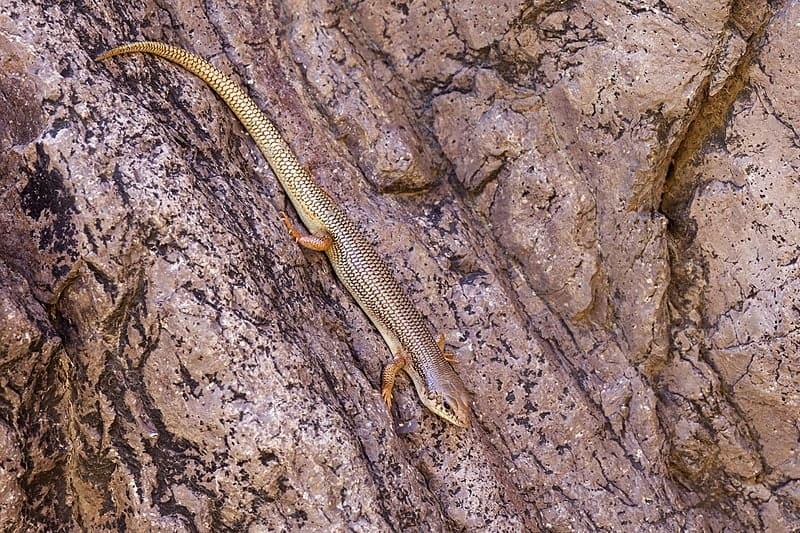
| Species: | Plestiodon obsoletus |
| Longevity: | 8 years |
| Good to own as a pet?: | Yes |
| Legal to own?: | Yes |
| Adult size: | 13 cm |
| Diet: | Carnivorous |
Great plains skinks are large lizards that are said to make great pets. They can reach up to 13 centimeters in size and can be found in the open plains, near areas with plenty of water.
This species of lizard is carnivorous, so they eat grasshoppers, snails, slugs, crickets, beetles, spiders, and other creepy crawlies. The natural predators of this species include larger predators such as birds, snakes, and other carnivores.
11. Ornate Tree Lizard

| Species: | Urosaurus ornatus |
| Longevity: | 3 years |
| Good to own as a pet?: | No |
| Legal to own?: | Yes |
| Adult size: | 2.3 inches |
| Diet: | Insectivore |
The ornate tree lizard is a lizard that doesn’t make a good pet. This species reaches 2.3 inches in length by adulthood. The males of the species are known to have a host of different colors, whereas the females don’t have any belly coloration to speak of.
They also spend most of their time off the ground and wait for insects to come by to feed. The male of the species becomes nomadic when it starts to get cold. The natural predators of this species include other lizards, snakes, and carnivorous mammals.

Conclusion
This concludes our guide on the 11 species of lizard you can find in Colorado. Whether you’re on a mountain trail, out and about in one of the parks, or eating a picnic in your own backyard, you’ll find these lizards often in your surrounding area.
The good news is there are no poisonous lizards or overly invasive ones to worry about in Colorado, so you’re good to go in that department. Just enjoy the lizard wildlife whenever you can take the time to get out and spend time in nature.
- You may also be interested in: 25 Snakes Found in Colorado
Featured Image Credit: Matt Jeppson, Shutterstock
